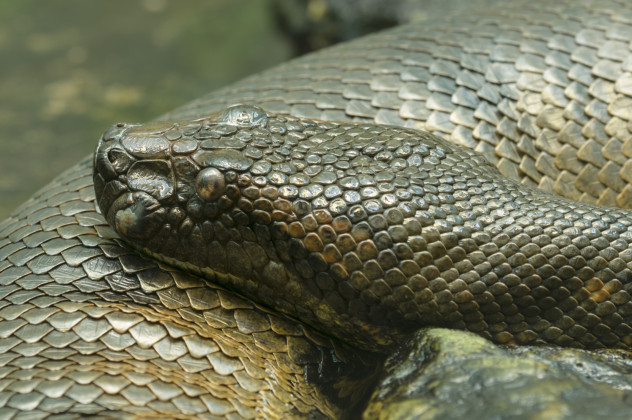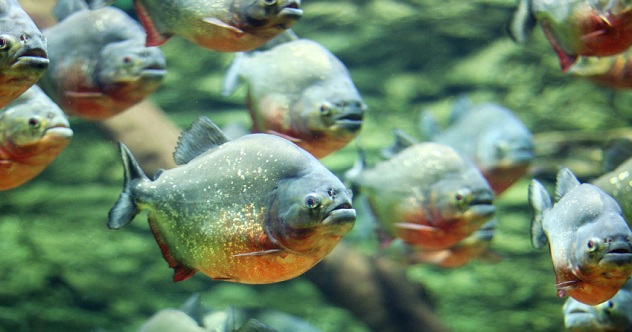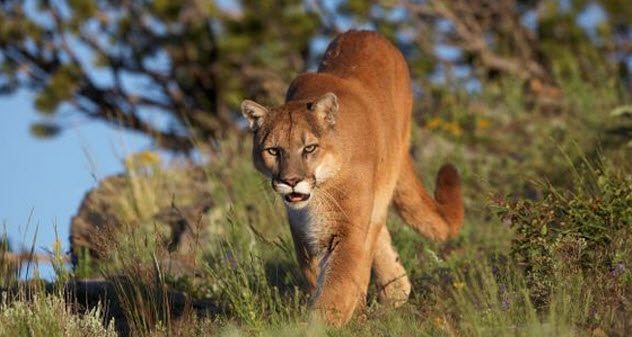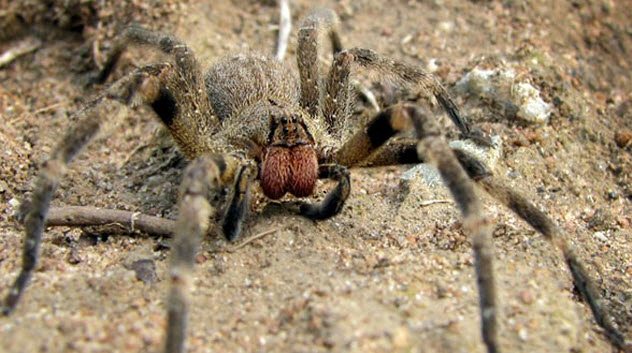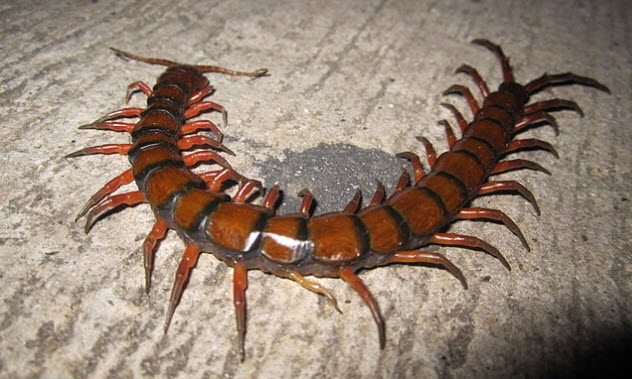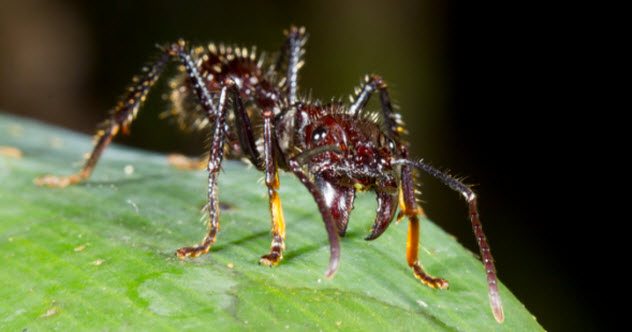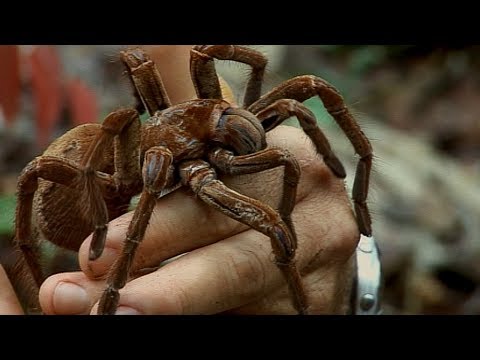This, though, isn’t to say that being careful is wrong; wild animals will always pose a threat and some on this list have seriously injured or even killed people. What’s also true, however, is that their reputation is almost always worse than the reality and they’re not an imminent threat to constantly worry about, especially not when basic precautions are taken. 10 Eerily Well-Preserved Remains Of Extinct Animals
10 Most Caimans
Caimans are typically small sized crocodilians of the family Alligatoridae, composing one of the only two subfamilies within that, the other being alligators. Given this, it’s no surprise people are afraid of them, especially when the aforementioned small size is often greatly exaggerated. As all crocodilians, they do still pose a threat, especially the species Melanosuchus niger, known by its common name as the black caiman, one of the largest crocodilians in the world, responsible for a horribly tragic fatal attack on a small child. You might ask, why are they on the list of animals that are less dangerous than their reputation, then? The answer mostly boils down to looking at caimans as a whole versus just a single species. While the black caiman is dangerous to children especially, even its attacks are relatively rare, and a lot of other caiman species that are virtually harmless as long as they’re left alone get grouped in alongside Melanosuchus niger. As always, being careful is important, but a single outlier doesn’t make a whole, diverse group of species all dangerous monsters. Most caimans are small, largely nocturnal animals that care way more for fish than people.
9 Green Anaconda
The heaviest extant snake in the whole world, nearly the longest too, that’s got to be one dangerous animal, right? To its prey, absolutely. To humans? No, not really. A truly incredible snake, the green anaconda may be as heavy as 70 kilograms which equates to a whopping 155 pounds and reach a length of over six metres, or 20 feet. While it’s nonvenomous, like all boas, it famously constricts its prey, swallowing it whole. While this is all true, and certainly paints a scary image in one’s mind, the green anaconda rarely eats prey as large as humans, as massive as this snake may be. In films and popculture it famously has the reputation of being a man-eater, but in reality, such attacks are extremely rare and largely undocumented. Even discounting a person’s size, though these snakes have incredibly varied diets, humans are simply not a source of food green anacondas seem to be interested in. There’s no doubt that an adult female of the species could kill a person if it wanted to, it really doesn’t seem like most wild specimens have any desire to do so. As usual, take care and avoid approaching or touching one, but as long as you’re careful you’ll be alright.
8 Piranha
Massive amounts of carnivorous fish moving in groups and capable of devouring a person or large animal in mere seconds, what’s not dangerous about that? The answer to that is; the non-exaggerated version. Piranhas are indeed fish that move in groups called shoals, but in actuality they’re omnivorous and scientists believe that their formed groups are more for their own protection than anything. Additionally, yes, you’ve read that correctly, these famously or perhaps infamously vicious fish are actually omnivores and their diets typically consist of more vegetable matter than meat. They do still eat meat, however, and have an incredibly powerful bite force, but even the famous example of a shoal of piranhas devouring a large carcass originates from nothing more than a former American president’s journal. Their bite is powerful, yes, and they may be able to devour an animal quite quickly, but they aren’t thought to represent a serious risks to humans and even the ideas that have some basis in reality were presented to the public after a great deal of colouring.
7 Poison Dart Frog
Another animal that’s been a mainstay in popular media, these beautiful, colourful frogs, like their name suggests, are poisonous. More than that, Phyllobates terribilis, also known as the golden poison dart frog, is famously, lethally poisonous. Certainly scary, but, as we’ve seen on this list so far, reality is typically tamer than sensationalised depictions of it. While they are poisonous, yes, many people don’t grasp how nonthreatening that is to the average person. Their poison is almost surely lethal if it gets into a person’s bloodstream, but given the fact that they have no method to deliver said poison, you’re only really at risk if you attempt to eat one or handle and agitate one over an open wound. Interestingly, as poisonous as they are, they completely lack these fearsome toxins in captivity, where they’re frequently kept as pets. Fairly intelligent, pretty, and a very recognisable cultural element in many indigenous cultures, these frogs are better admired than feared.
6 Cougar
Cougars, also widely known in the United States as mountain lions, or elsewhere as pumas or panthers—not to be confused with other large cats also referred to as panthers -, are the second largest New World cat species. Given the fact that they live near inhabited areas and may emit terrifying, scream-like sounds, they’re a common element in folklore and urban legends. Often thought to be quite dangerous as well, that conception certainly seems logical on the surface. Large cats are famously threatening predators, the idea of one so close to home for many people is a scary thought, and cougars are common all across the Americas, South America being no exception. Thankfully, however, attacks on humans from cougars are extremely rare. Additionally, it currently seems as though they’re at a much larger risk from us than we are from them, given the fact that they’re commonly killed due to their dangerous reputation, thus more and more sources are speaking out against the embellished claims in hopes of stopping the species’ decline.
5 Brazilian Wandering Spider
Arachnophobic people are presumably already protesting that such a monstrous creature is being defended, but, again, there are good reasons for that. Wandering spiders are large, active arachnids, reaching leg spans of up to 6 inches or 15 centimetres, and preferring to actively hunt rather than wait in a web. The aforementioned facts coupled with one of the most toxic spider venoms on Earth and the fact that their bite, strangely, causes human erections certainly makes them odd, at the very least. Sometimes hiding in banana leaves or even international banana shipments, these creepy crawlies are rightfully feared as far as spiders go. While that is all true, spiders aren’t rightfully feared to begin with. Wandering spiders specifically have been characterised as infamously aggressive, even though the reality is that they’re instead rather defensive. They, like all spiders, are not out to harm humans and will only bite in self-defence. What if one does bite, though? Well, the outlook isn’t as bleak as one might think, certainly not instant death. According to a Brazilian study, only 2.3% of all reported bites require antivenom and chances of survival are very high.
4 Giant Otter
Giant otters, to many, might sound like adorable animals, however, to others, they have a horrible, vicious reputation. The truth is somewhere between the two, as it’s usually the case. Twice as large as American otters, growing up to 2 metres or over 6 feet, they’re an apex predator and hunt using their great senses and, yes, surprisingly vicious nature. While they’re perhaps cute on the surface, their bad reputation isn’t inherently unfounded and these opportunistic carnivores could probably kill a person. Once again, however, they really are generally uninterested in doing so, hunting for much smaller prey and only really fighting large animals in self defence. In addition, unfortunately the giant otter is a greatly endangered species, its range having been reduced to a fraction of its former size due to human poaching. Another case of us posing a much larger threat to them than they ever do to us. Scolopendra gigantea preys on a large variety of animals and may live for as long as a decade. They’re carnivores and may hunt any animal they’re able to overpower, some potentially as large as they are. Definitely a combination to be afraid of for anyone who’s afraid of creepy crawlies, but, realistically, they’re unlikely to be fatal. There’s been only one human fatality associated with the species, a case in which a child was tragically bitten by one of these centipedes hiding in a soda can. While they may not be a serious threat in the vast majority of cases, that’s a deeply unfortunate scenario and a horrifying image.
2 Bullet Ant
Bullet ant—an ant with a sting so powerful it feels like being shot. Scary? A little. Dangerous? No. These large ants certainly deliver a sting that lives up to their name, a powerful venom leaving anyone unfortunate enough to be stung with waves of intense pain, one apparently so horrible that it holds the top spot on Schmidt’s sting pain index. Additionally, a disturbing image to add, indigenous Brazilian tribes willingly sting themselves using tens of these ants at once woven into gloves that they must wear for minutes, presumably making for a deeply awful experience that’s certainly one to remember and be scarred by. That being said, even though the pain is truly terrible and bullet ants can sting multiple times in a row, no human fatalities have ever been attributed to their stings as of this article, ever.
1 Goliath Birdeater Tarantula
Topping off the list is perhaps the most sensationalised animal of these ten, which is certainly saying a lot. Goliath birdeater tarantulas are among the largest spiders on Earth, holding the #2 spot when it comes to leg span and the top spot for heaviest spider currently known. They’re massive, hairy, and can launch the urticating hairs from their abdomen at rapid speeds as a defence mechanism, extremely irritating hairs that may even block airways. They’re, as their name suggests, huge, with a leg span that may be as large as one foot, and a weight up to six ounces or 175 grams, it’s a truly impressive spider. Even though, despite their title, they rarely eat birds, they’re probably the spider best suited to do so on the planet. Their size, however, is often exaggerated to be even larger than their already nearly record-breaking proportions, alongside claims of their urticating hairs causing people to suffocate or their venom being deadly. While they perhaps aren’t as docile as other South American tarantulas, they still aren’t the most defensive and certainly not aggressive. To this date, no human fatality has ever been attributed to a tarantula, not this, nor any other. 10 Amazing Color Mutations In Animals

